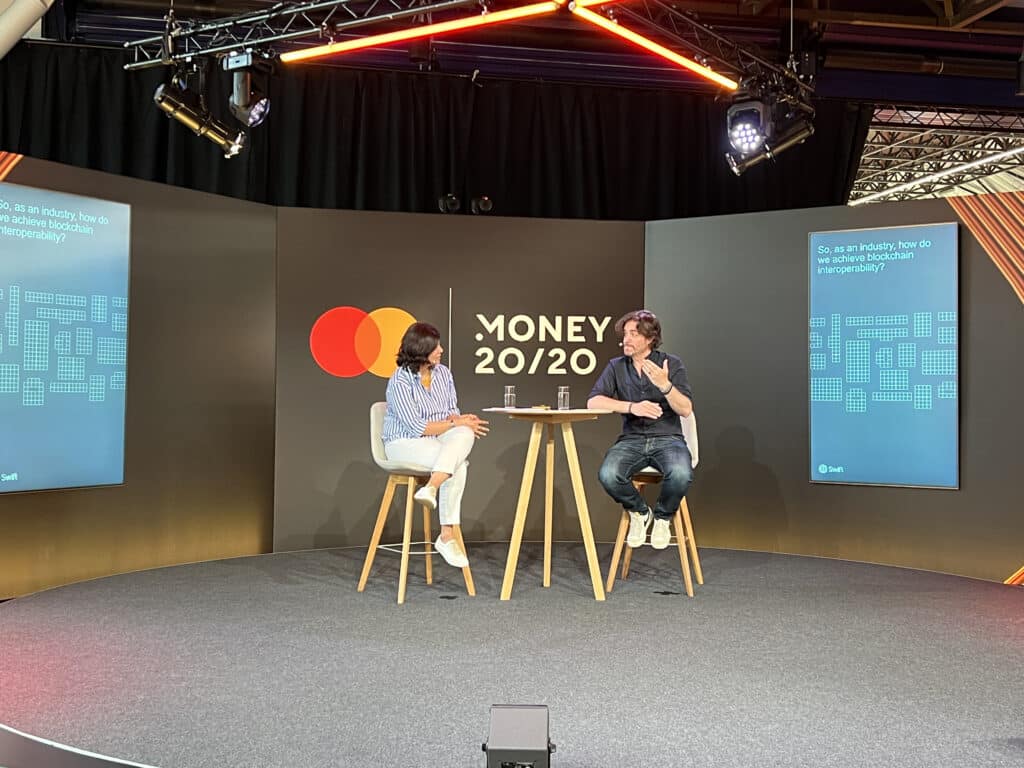
Pallavi Thakur, Director of Strategy and Innovation at Swift, and Julien Clausse, head of Asset Foundry at BMP Paribas, shared insights about tokenization at the Money20/20 conference.
During their joint presentation, both Clausse and Thakur agreed that tokenization faces significant interoperability challenges, requiring solutions at multiple levels.
Citing themes from her talk yesterday, Thakur cited interoperability as a barrier to tokenization, claiming that tokenization platforms often create isolated networks or “islands” that don’t inherently communicate with each other.
“Tokenization is gaining momentum and is poised to transform the securities market,” said Thakur. However, she highlighted a significant hurdle: “These tokenization platforms often form isolated ‘islands’ that don’t inherently communicate with each other.”
These islands lead to interoperability and exist on multiple levels: the network layer (ensuring different networks can communicate), the token format layer (ensuring compatibility of tokens across networks), and the data layer within tokens, said Thakur. Addressing these layers is essential for seamless operation.
Both speakers highlighted that the success of tokenization relies on overcoming the fragmented and divided multi-leveled blockchain environment.

Multileveled issues across different blockchain networks
Clausse echoed this sentiment of different blockchains causing these issues and emphasized the complexity of achieving true interoperability, citing diverse blockchain projects as the root of the problem.
“There are multiple levels — network, token format, and data within the tokens,” Clausse stated. He claimed that the tokenization industry needs common networks and the same standards of adoption.
Establishing industry standards across diverse blockchains is crucial for the future of tokenization, per Clausse. These standards should stem from top-down consensus among industry players and practical, real-world applications.
Use cases and industry standards
Both speakers agreed on the importance of practical use cases and industry standards for the future of tokenization.
“There are multiple standards now,” Clausse said. “So everybody is trying to work with unique standards.”
Both speakers mentioned examples of following industry standards — such as the tokenizing of small-scale renewable energy projects by Swift — which can now be financed and managed more efficiently and transparently. They emphasized the need for industry collaboration and urged the crypto industry as a whole to address interoperability challenges.
Tổng hợp và chỉnh sửa: ThS Phạm Mạnh Cường
Theo Crypto News
